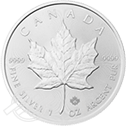Are You Really Diversified?
Diversification is word that is commonly used in investment circles but is also commonly misunderstood. The definition of diversification may mean something completely different from one investor to the next. What if we told you that some investors really believe that owning a bunch of stocks along with some bonds means they are well-diversified?
What if we told you that an investor thinks he is well-diversified because he owns 10 or 15 different oil company stocks? How about owning 10 or 15 mining company stocks? Does that make one diversified?
Thinking You Are Diversified When You Are Not
Although many investors may think they are diversified, often times nothing could be further from the truth. For example, how can having exposure to 15 different oil companies help mitigate the risk of lower oil prices or higher production?
For all the “stock and bond” portfolio people out there-what if the economy enters a sustained period of stagflation in which prices are rising while employment declines? In such a scenario it is possible that bonds and notes could lose value while stocks could trade sideways or even move lower. Does that sound like the type of mix that will help your portfolio perform well? What about simply keeping up with inflation?
Risk Must Be Spread Out
To be diversified means to have your risk spread out as much as possible while trying to avoid sacrificing returns in the process. Of course, to be well-diversified, some potential upside may have to be sacrificed in order to help mitigate potential downside risks.
You can’t have your cake and eat it too as they say. Or can you?
Although the argument can be made for diversifying with various asset classes including stocks, bonds, ETFs, real estate and more, there is one asset class that you definitely do not want to overlook. That asset class is physical gold.
Gold has been considered a reliable store of value and protector of wealth for thousands of years. This key metal can add another degree of diversification to your portfolio.
Gold May Mitigate Risks
First and foremost, gold can potentially help mitigate several important risk factors that can have a dramatic effect on a portfolio. Inflation, for example, can erode your purchasing power while taking a bite out of your real returns. Falling currency values can have similar effects, eroding the amount of goods and services that your dollars may provide.
Gold may potentially help mitigate these risks. This metal has been considered a meaningful hedge against inflation and declining currency values for some time. Gold may potentially not only hold its value during such periods but it may increase in value, helping to offset some potential declines elsewhere.
Gold has significant potential for price appreciation, and there is no telling just how high the price of a finite asset like gold could go. $2500 per ounce, $5000 per ounce, even $10000 per ounce. The sky is the limit.
If your portfolio does not already contain a meaningful allocation in physical gold, no may be the ideal time to consider making some changes. Adding gold to your holdings has never been easier than it is today.
Speak with an Advantage Gold account executive today about the potential benefits of physical gold ownership. Our associates are here to answer any questions you may have, and can even show you how to buy and hold gold using your IRA account.
Don’t just believe you are well-diversified. Take steps to help ensure that you are.
For more information or to talk to an IRA advisor about how to roll over your 401(k) into a Gold IRA by opening a self-directed IRA account, contact us or call us at 800-341-8584 today.



